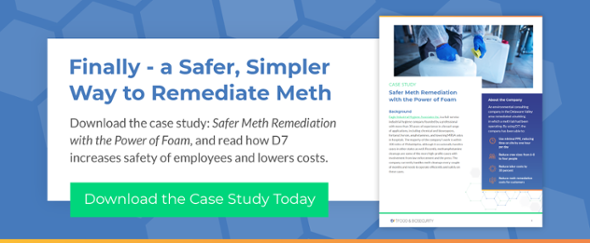Law enforcement and first responders are used to finding themselves in unfamiliar situations with unknown risks that might include weapons, unpredictable people, and so on.
In recent years, the opioid crisis has created a sharp increase in the potential risks that law enforcement and first responders face, with more than 100,000 drug overdose deaths a year. In emergencies such as suspected overdoses or disruptions of makeshift laboratories and drug repackaging operations, teams must work fast and keep themselves protected.
The Risks of Accidental Exposure to Opioids
Chemical exposure from illicit drugs is one of the more challenging risks to assess because it’s not always immediately evident what substances are present at a scene. Accidental exposure to meth, oxycodone, or fentanyl presents a real risk for individuals responding to emergencies. Often found as powders or liquids, these types of drugs can enter the body through:
-
- Inhalation
- Ingestion
- Skin contact
- Mucous membranes
Very little fentanyl is required to create a health risk, essentially the equivalent of 5-7 grains of salt. Fentanyl is particularly dangerous because of its potency—up to 100 times more than morphine—and exposure could put law enforcement and first responders at risk of:
-
- Respiratory depression
- Respiratory arrest
- Coma
- Death
The types of workers that could be exposed to harmful drug chemicals include:
-
- Emergency medical services
- Drug task force agents
- Undercover agents
- Crime labs
- Healthcare workers
- Scene cleanup workers
- Fire services
How to Prevent Exposure to Opioids
The CDC has recommended protocols for encounters with suspected chemical opioids, including:
-
- Using appropriate personal protective equipment (PPE), such as nitrile gloves and respiratory protection.
- Learning National Institute for Occupational Safety and Health (NIOSH) operating procedures.
- Preventing powdered substances from becoming airborne.
- Avoiding contact with eyes, nose, and mouth while on the scene and until after washing hands.
If exposure does happen, having naloxone on hand can be a life-saving measure. If the presence of fentanyl or other potentially harmful chemical substances is suspected or known, neutralizing them will help prevent exposure.
The U.S. Environmental Protection Agency (EPA) is also working to determine the best approach to handling chemical contaminants, including using compounds like D7 to neutralize chemicals and physically remove powders on surfaces. This approach could dramatically reduce the risk of exposure for cleanup personnel because powders could be chemically neutralized before becoming airborne.
The Decon7 Solution: BDAS+
When unknown chemicals are present at a scene, responders need to neutralize them. The Decon7 Systems BDAS+ unit is a handheld solution for reducing the risk of exposure to chemical contaminants, including fentanyl and other opioids. BDAS+ is a portable, ready-to-use applicator that dispenses the proprietary D7 formulation to neutralize chemical threats. The product is mixed into the unit, and there is no need to pre-mix. Just pull the trigger to apply.
Having this type of tool on hand can not only save the lives of the people on the scene, but also have a ripple effect. In a small town with limited resources, when an ambulance becomes unavailable because it’s contaminated, it can impact people’s lives. Being able to decontaminate surfaces and maintain emergency operations is essential.
Get Started with Decon7 Systems
When you work with Decon7 Systems, you get more than just products and equipment. Our team provides product demonstrations and training so you can be confident that your team has the skills and resources needed to reduce exposure to potentially harmful chemicals in the field.
To learn more about D7 for law enforcement applications, read our meth lab remediation case study.



